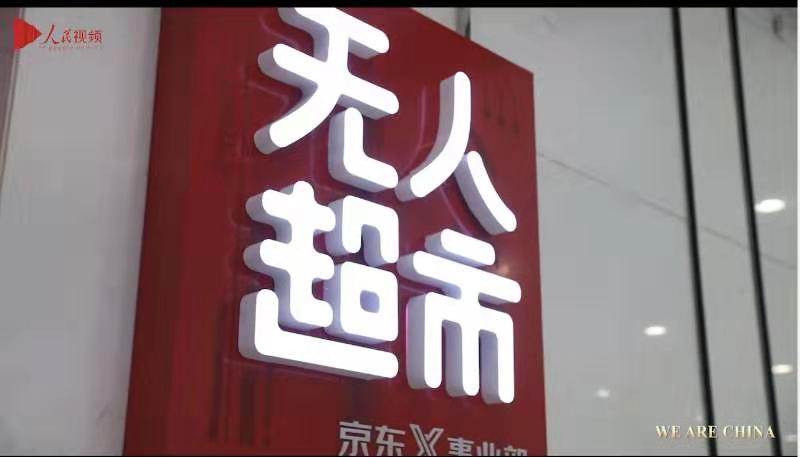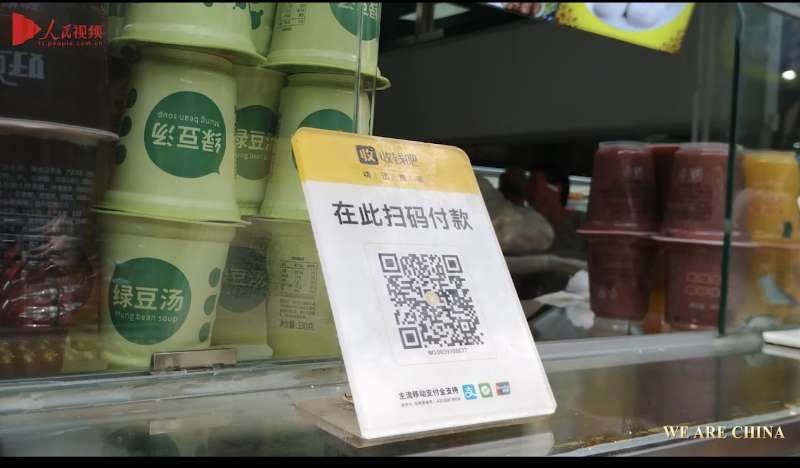

Although it seems like we could never have lived without it in China, WeChat only launched as a messenger app in 2011. Now, it's used for everything from updating people on what you ate for lunch, comparable to Facebook, to buying your weekly shop. So much so that WeChat, alongside Alibaba's Alipay, is one of the leading players behind China's cashless revolution.
Thanks to these apps, it's never been easier to pay by scanning a QR code with your mobile phone, so forgetful people like me can afford to leave their wallets at home, as long as they've remembered to charge up their phones before leaving the house.
Over the last few years, apps like WeChat pay and Alipay have become popular methods of payment in China. Now, you can go into any shop, from a high-end fashion outlet to the local paper stand and you'll find a little QR code to pay.

Due to the country’s tech boom, people are moving further away from cash payment. In cities like Beijing, we basically already live in a cashless society - nobody really uses cash anymore. So much so, in fact, that coffee shops like Luckin Coffee have already removed their cash registers, so you have to pay using your phone.
And it doesn't stop there. You can use your phone for pretty much anything today in China, from eating in a restaurant to buying clothes, and even getting around the city using share bikes, subways or taxis. It's not surprising, since WeChat alone had over 900 million active monthly users by the end of last year, leading more people to use the payment features than ever before.
Of course, the fact that people are using mobile apps to pay for things isn't a new phenomenon, but the amount that people are spending is. As indicated by iResearch data, back in 2016, total mobile payment transactions in China stood at a hefty $5 trillion, but last year this shot up to around $41.5 trillion, according to China Daily.
While there are still plenty of places that will accept your real-life yuan, several companies are trying to find the next big step in cashless payment, and there's one particular method that sounds a bit too high-tech for me, so I want to go and see with my own eyes.
JD is planning a number of unmanned stores, where instead of checkouts, the store charges its customers using facial recognition. But how easy is it to pay using my face? And is this something which could be implemented across the whole country, or even world?

I went to JD's Beijing headquarters to test out their flagship cashless store and find out exactly how it works.
Before entering the store, I was required to download an app, which allowed me to link my WeChat Pay with the shop. The app takes a photo of your face and attaches it to a personalized QR code, which will work together with the hundreds of cameras positioned around the store to track your movements and choices. Within 20 seconds, you're in the store and ready to go.
Each shelf has an integrated weight sensor, so as soon as an item is removed, the smart shelf logs the selection, and the cameras pinpoint the customer who picked it up.
I chose a few items to see if I could confuse the sensors. Several pieces from the fresh food aisle, coffee, snacks, bags of crisps (wondering if the shelf would be able to detect I was greedily shoving three bags into my plastic bag at once.)
After realizing I should have had breakfast before being given free rein in a supermarket, I decided to test out the facial pay part of the experience. I expected a checkout area which scans your face, but instead, I was ushered out of the shop without a second glance. Was I going to get arrested for stealing crisps?

After a couple of seconds of looking around in confusion for a security guard to come and make me pay properly, a ping on my phone indicated that a payment had been taken from my bank account, and on opening up my phone I saw a receipt of items that I had chosen. As simple as that! Although quick and convenient (and accurate - the system noticed all the crisps), I still didn't feel like I'd paid any money for the items I'd just walked out with.
JD is not the only company currently trialing this method of payment. Earlier this year, local government from Wenzhou city in east China’s Zhejiang Province teamed up with Ant Financial to create the first street in China to extensively apply facial recognition in making payments, with around 20 stores investing in facial payment systems. Earlier this year, Shenzhen also trialed facial recognition payments for its subway system.
Although there is still a way to go before facial payment is implemented to the same extent as mobile payment, it is becoming more popular up and down the country. As people look for more convenience in all aspects of their lives, I could see facial recognition becoming the next big payment method in China. For people like me, who inevitably forget to charge their phones before leaving the house, there could soon come a time when we can also leave our phones at home beside our wallets.

 Award-winning photos show poverty reduction achievements in NE China's Jilin province
Award-winning photos show poverty reduction achievements in NE China's Jilin province People dance to greet advent of New Year in Ameiqituo Town, Guizhou
People dance to greet advent of New Year in Ameiqituo Town, Guizhou Fire brigade in Shanghai holds group wedding
Fire brigade in Shanghai holds group wedding Tourists enjoy ice sculptures in Datan Town, north China
Tourists enjoy ice sculptures in Datan Town, north China Sunset scenery of Dayan Pagoda in Xi'an
Sunset scenery of Dayan Pagoda in Xi'an Tourists have fun at scenic spot in Nanlong Town, NW China
Tourists have fun at scenic spot in Nanlong Town, NW China Harbin attracts tourists by making best use of ice in winter
Harbin attracts tourists by making best use of ice in winter In pics: FIS Alpine Ski Women's World Cup Slalom
In pics: FIS Alpine Ski Women's World Cup Slalom Black-necked cranes rest at reservoir in Lhunzhub County, Lhasa
Black-necked cranes rest at reservoir in Lhunzhub County, Lhasa China's FAST telescope will be available to foreign scientists in April
China's FAST telescope will be available to foreign scientists in April